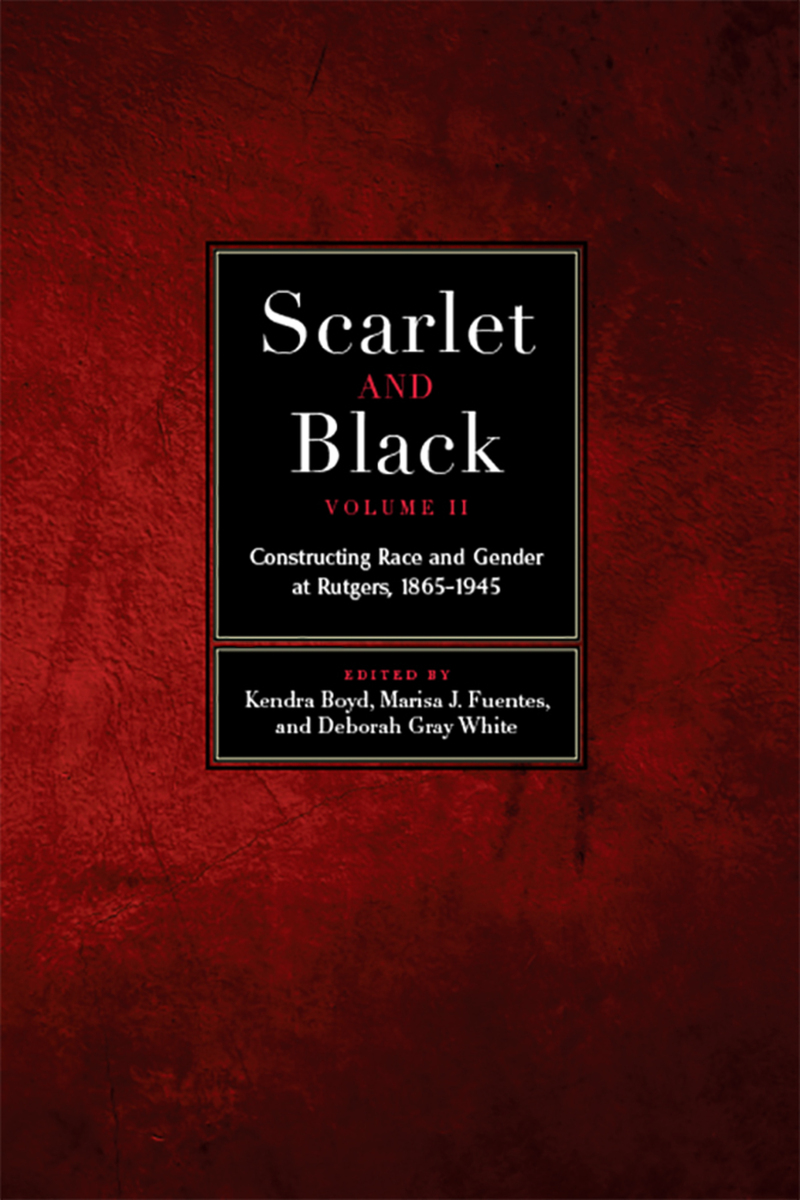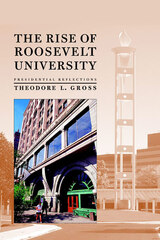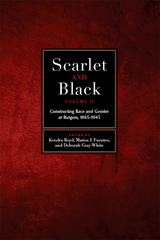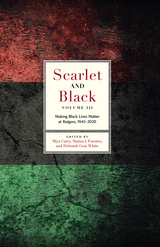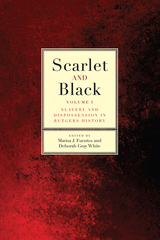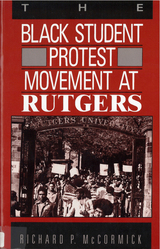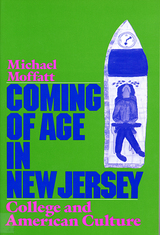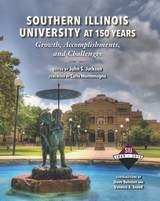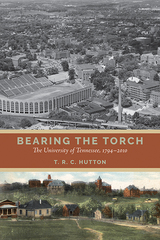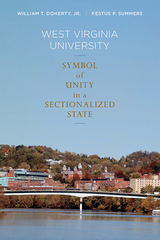Scarlet and Black, Volume Two: Constructing Race and Gender at Rutgers, 1865-1945
Rutgers University Press, 2020
Cloth: 978-1-9788-1633-6 | eISBN: 978-1-9788-1305-2 | Paper: 978-1-9788-1302-1
Library of Congress Classification LD4753.S33 2016
Dewey Decimal Classification 378.74942
Cloth: 978-1-9788-1633-6 | eISBN: 978-1-9788-1305-2 | Paper: 978-1-9788-1302-1
Library of Congress Classification LD4753.S33 2016
Dewey Decimal Classification 378.74942
ABOUT THIS BOOK | AUTHOR BIOGRAPHY | REVIEWS | TOC
ABOUT THIS BOOK
The 250th anniversary of the founding of Rutgers University is a perfect moment for the Rutgers community to reconcile its past, and acknowledge its role in the enslavement and debasement of African Americans and the disfranchisement and elimination of Native American people and culture. Scarlet and Black, Volume 2, continues to document the history of Rutgers’s connection to slavery, which was neither casual nor accidental—nor unusual. Like most early American colleges, Rutgers depended on slaves to build its campuses and serve its students and faculty; it depended on the sale of black people to fund its very existence. This second of a planned three volumes continues the work of the Committee on Enslaved and Disenfranchised Population in Rutgers History. This latest volume includes: an introduction to the period studied (from the end of the Civil War through WWII) by Deborah Gray White; a study of the first black students at Rutgers and New Brunswick Theological Seminary; an analysis of African-American life in the City of New Brunswick during the period; and profiles of the earliest black women to matriculate at Douglass College.
To learn more about the work of the Committee on Enslaved and Disenfranchised Population in Rutgers History, visit the project's website at http://scarletandblack.rutgers.edu
To learn more about the work of the Committee on Enslaved and Disenfranchised Population in Rutgers History, visit the project's website at http://scarletandblack.rutgers.edu
See other books on: Black | Fuentes, Marisa J. | Rutgers University | Volume Two | White, Deborah Gray
See other titles from Rutgers University Press
